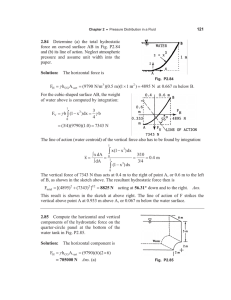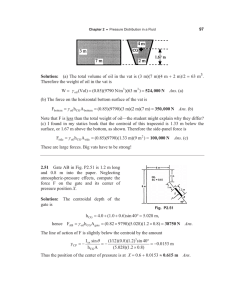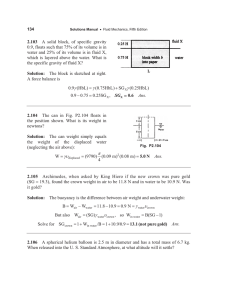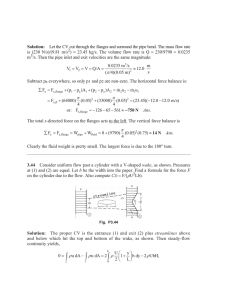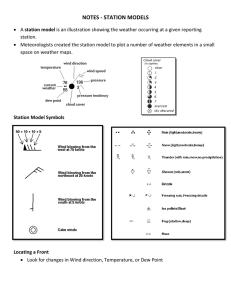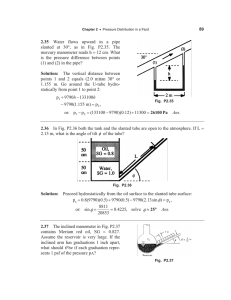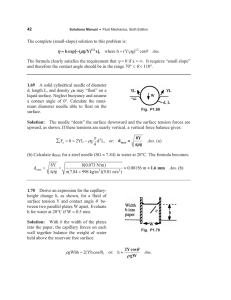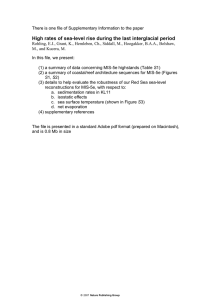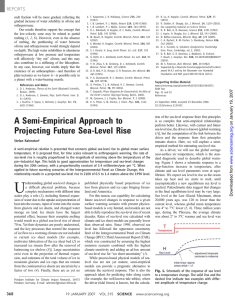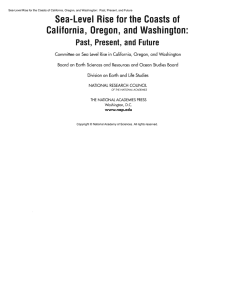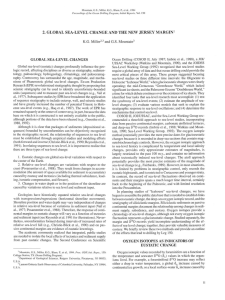J
advertisement
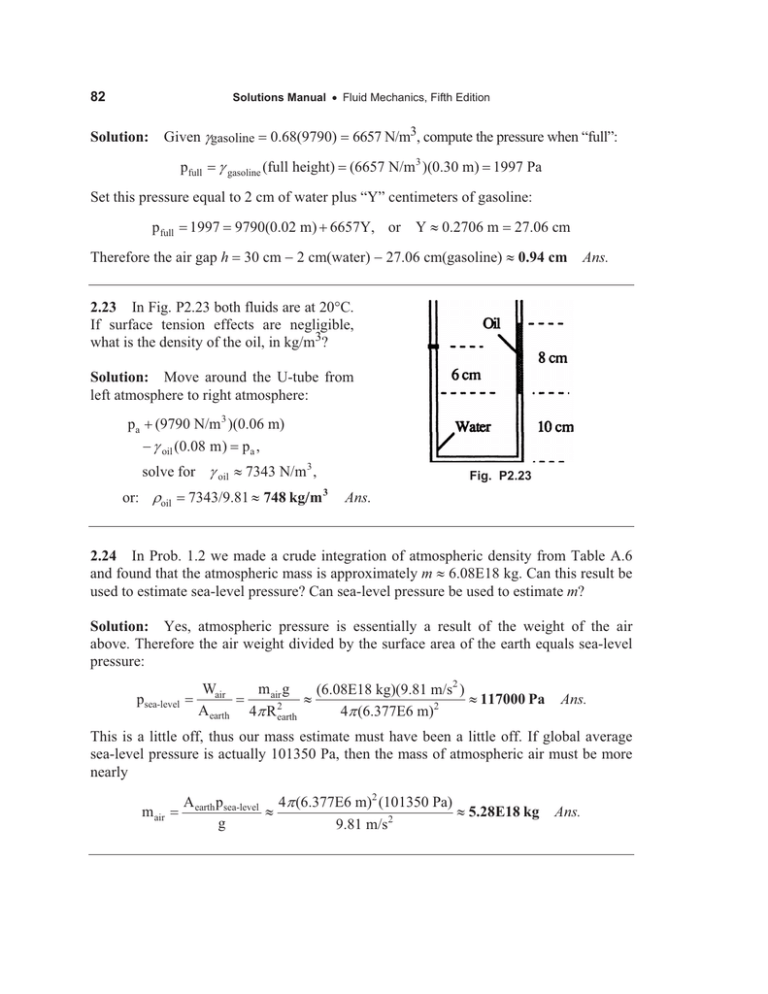
82 Solutions Manual x Fluid Mechanics, Fifth Edition Solution: Given Jgasoline pfull 0.68(9790) 6657 N/m3, compute the pressure when “full”: J gasoline (full height) (6657 N/m 3 )(0.30 m) 1997 Pa Set this pressure equal to 2 cm of water plus “Y” centimeters of gasoline: pfull 1997 9790(0.02 m) 6657Y, or Y | 0.2706 m Therefore the air gap h 27.06 cm 30 cm 2 cm(water) 27.06 cm(gasoline) | 0.94 cm Ans. 2.23 In Fig. P2.23 both fluids are at 20qC. If surface tension effects are negligible, what is the density of the oil, in kg/m3? Solution: Move around the U-tube from left atmosphere to right atmosphere: pa (9790 N/m 3 )(0.06 m) J oil (0.08 m) pa , solve for J oil | 7343 N/m 3 , or: Uoil 7343/9.81 | 748 kg m Fig. P2.23 3 Ans. 2.24 In Prob. 1.2 we made a crude integration of atmospheric density from Table A.6 and found that the atmospheric mass is approximately m | 6.08E18 kg. Can this result be used to estimate sea-level pressure? Can sea-level pressure be used to estimate m? Solution: Yes, atmospheric pressure is essentially a result of the weight of the air above. Therefore the air weight divided by the surface area of the earth equals sea-level pressure: psea-level Wair A earth m air g (6.08E18 kg)(9.81 m/s2 ) | | 117000 Pa 4S R 2earth 4S (6.377E6 m)2 Ans. This is a little off, thus our mass estimate must have been a little off. If global average sea-level pressure is actually 101350 Pa, then the mass of atmospheric air must be more nearly m air A earth psea-level 4S (6.377E6 m)2 (101350 Pa) | | 5.28E18 kg g 9.81 m/s2 Ans.
